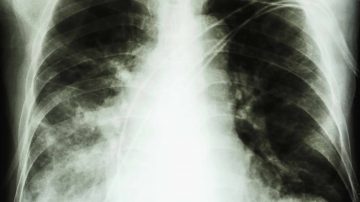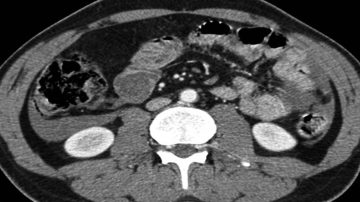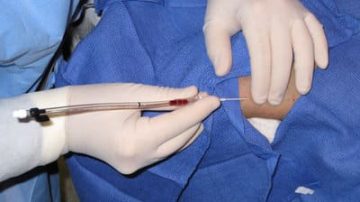Cardiac troponin assays have gone through a tremendous evolution since they were introduced into clinical labs in 1995 until the most recent ultra-sensitive assays became prevalent in 2007. The original troponin T (TnT) and troponin I (TnI) assays had a…
Read MoreThe bactericidal activity of antibiotics depends on the class of antibiotic used. Some antibiotics like vancomycin, aminoglycosides and fluoroquinolones are dose-dependent for their bactericidal activity. Other antibiotics like beta-lactam antibiotics are time-dependent antibiotics which depend on maintaining drug concentrations above…
Read MoreAre MRSA Antibiotics Overprescribed for Community-Acquired Pneumonia? – NEJM Journal Watch Nearly 30% of hospitalized CAP patients received antibiotics for MRSA, even though fewer than 1% had MRSA-associated CAP. A recent multicenter, prospective, active-surveillance study of 2259 patients hospitalized with…
Read MoreThis population-based cohort study between 2000 and 2012 from the UK’s Health Improvement Network database compared diagnoses between 275,000 adults who had been prescribed corticosteroids and 626,000 who had not been prescribed corticosteroids. The query was whether corticosteroid recipients had…
Read MorePrior to the revised Swedish lumbar puncture guideline, a CT scan was often performed prior to lumbar puncture when acute bacterial meningitis was suspected. Taking the time to perform a CT scan of the head before lumbar puncture delays treatment…
Read MoreMore Articles – Arterial line, Cardiovascular diseases, Central line, Infections, medical procedures
Arterial line-associated bloodstream infections occur at rate of 0.9-3.4 infections per thousand catheter-days. This rate of infections is similar to the risk of central line-associated bloodstream infections (CLABSIs). The CDC guidelines for arterial line placement recommend the use of chlorhexidine…
Read MoreThe goal of zero device-related infections is what CMS desires for all hospitals, but is not a realistic goal. Nevertheless, we can do everything in our power to minimize central line-associated bloodstream infections (CLABSIs). We now can appreciate that the…
Read MoreIn an open-label trial involving adults with complicated intra-abdominal infections at 23 centers in the U.S. and Canada, researchers have investigated whether fixed-duration antimicrobial therapy (4 days) after source control is as effective as the traditional strategy (antibiotic administration until 2 days…
Read MoreLung ultrasound can detect pneumothorax and pulmonary edema, but limited data exist to quantify its accuracy for diagnosing pneumonia. In a prospective study, investigators compared lung ultrasound to chest computed tomography (CT) and chest x-ray among adult patients presenting with…
Read MoreSteroids beneficial in refractory septic shock Preface: This multi-center observational study of over 1,800 patients examined whether low-dose steroids (<80 mg prednisone equivalents) was superior to placebo for patients in septic shock. There results showed that there was a slight…
Read MorePreface: Nice summary of the changing pathogenic organisms causing severe sepsis. This summary also displays how improved sepsis recognition and management has decreased mortality from 40% to 28% over the last decade. Mortality decreased from 40% to 28% overall. Although…
Read MoreA large cohort study out of Denmark examining over 17,000 ER visits by adults determined that the absence of all three criteria fever, elevated CRP and SIRS criteria had a 99.5% negative predictive value for excluding bacteremia. Fever, elevated CRP level,…
Read MoreNew guidelines from the International Antiviral Society recommend antiretroviral therapy for ALL HIV-infected patients Sponsoring Organization: International Antiviral Society–USA (IAS-USA) Target Population: Clinicians who treat HIV-infected patients Key Recommendations Antiretroviral therapy (ART) is recommended for all HIV-infected patients, including those with acute HIV infection—but…
Read MoreIn 2001, the Rivers trial showed that Early Goal Directed Therapy for septic shock resulted in a 16% absolute mortality risk reduction1. In the treatment arm of this trial, septic patients with a lactate above 4 mmol/L or systolic blood…
Read MoreArterial lines are not completely benign. They can definitely cause catheter-related bloodstream infections. This study shows that arterial lines have a rate of bloodstream infection of about 1 in 1,000 catheter days. Femoral arterial lines have a higher rate of…
Read MoreCategories
- ACLS (1)
- Arterial line (33)
- Cardiovascular diseases (77)
- Central line (55)
- Chest Tube (39)
- Dermatology (4)
- Emergency Procedures (138)
- Endocrinology (6)
- Endotracheal Intubation (35)
- Events (24)
- FAST Exam (12)
- Featured (110)
- Featured Procedure (42)
- Gastrointestinal diseases (32)
- Ginecology (3)
- Glidescope Intubation (21)
- Hematology (33)
- Hospital Procedures (85)
- Infections (32)
- Intraosseous line (8)
- King Tube (27)
- Laryngeal Mask Airway (18)
- Lumbar Puncture (36)
- Mechanical Ventilation (34)
- Medical General (95)
- medical procedures (257)
- Needle Decompression (6)
- Nephrology (11)
- Neurological diseases (12)
- Oncology (4)
- Paracentesis (32)
- Pericardiocentesis (3)
- Procedural Sedation (19)
- Respiratory diseases (85)
- RUSH Exam (8)
- Thoracentesis (37)
- Traumatology (24)
- Travel (27)
- Ultrasound-Guided Peripheral IV (13)











